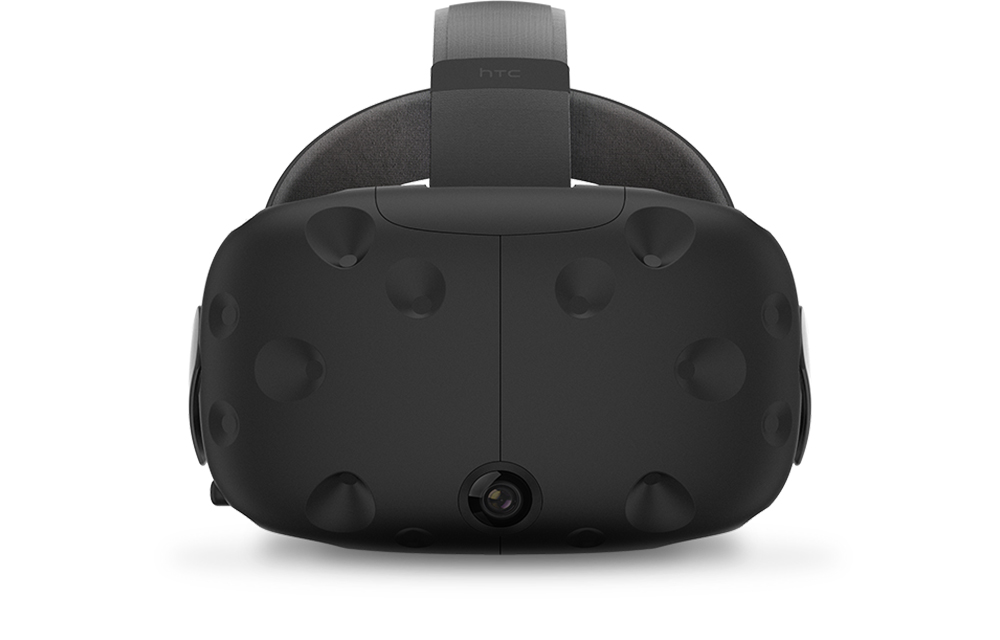Enthusiasts on Reddit and outlets like Engadget have been zeroing in on a comment apparently made by HTC CEO Cher Wang that Valve and HTC made a “very, very big technological breakthrough” leading them to release a second developer kit for the Vive.
Theories range from a wireless headset to high dynamic range displays that could show a wider range of detail than typical screens. Neither of those seem likely in the near term because of current hardware limitations. Others are guessing they’ve worked out full body or finger tracking, though again current technical constraints make that difficult.
That said, Valve’s Alan Yates did point out on Twitter that an accessory on your feet could provide foot tracking in VR. If HTC and Valve created a small accessory that attaches to each foot they might be able to provide workable full body tracking in VR, when combined with SteamVR controllers and head tracking. This might be able to unlock new kinds of single or multiplayer virtual experiences. Sony, for example, has a game coming for Playstation VR called Headmaster designed to simulate heading a soccer ball into a goal. A foot accessory with Lighthouse (the Vive’s position tracking technology created by Yates) might actually let you kick the ball.
On Reddit, Yates wrote the VK2 headset debuting at CES “has the controller receivers in the headset,” which would explain the need for a new kit that could function better through wireless interference. The same tech could communicate between foot sensors and the headset.
Another possibility that we’ve heard previously (from Magic Leap’s newest employee) is that the Vive does contain an outward-facing camera, specifically “to notify you that an object is moving in front of you.” A recent leak showed a front facing camera on a Vive headset too. Is that a “very, very big technological breakthrough”? Maybe. After all, not running into your loved ones or pets while in VR is pretty important.
Something else I’ve been pondering that’s been hidden in plain sight is the addition of software features built around photogrammetry demos Valve has been working on. These demos blur the lines between what’s real and what’s virtual in a mind-blowing new way.
Take a look at the below video which went online back in September. It might be a little confusing to realize what you’re looking at, so let me break it down first. The video shows three different clips of scenes that were captured using photogrammetry techniques. What exactly is photogrammetry? Here’s a brief explanation taken from a guide to these Valve demos that was published in September:
…photogrammetry certainly isn’t magic, but it’s getting close. It involves using images from a conventional digital camera to create three-dimensional scenes, exploiting the differences in photos taken from different positions and angles.
So the first of these three scenes depicted in that video shows a person virtually inside a room with QR codes all over the walls. Even though the person with the VR headset was in a different room, as seen in the corner of the video, he felt like he was moving around the QR code room. Two more examples of photogrammetry are shown in the video:
What if the Vive’s camera could create a complete model of your room too? Though photogrammetry requires time-intensive computer calculations to create that kind of a scene, is it conceivable that you could scan the roo m using the headset alone and let the same computer you use to create a VR world work out the scene during it’s downtime between showing you VR experiences?
m using the headset alone and let the same computer you use to create a VR world work out the scene during it’s downtime between showing you VR experiences?
These are all huge technical problems but if (or when) they are solved the lines between augmented and virtual reality technology would likely disappear. Using photogrammetry, simple passthrough augmented reality or some combination thereof, the real environment could fade in and out whenever you want or need it. You could grab a drink of water from the table, put it back down and then disappear back into VR without taking the headset off. People who aren’t able to make it to your house can put on a headset and feel like they are actually with you in the same real-world room.
These are all very big problems and any one of them, solved solidly by HTC and Valve, would be a pretty impressive reveal at CES. I can’t wait till January.

























